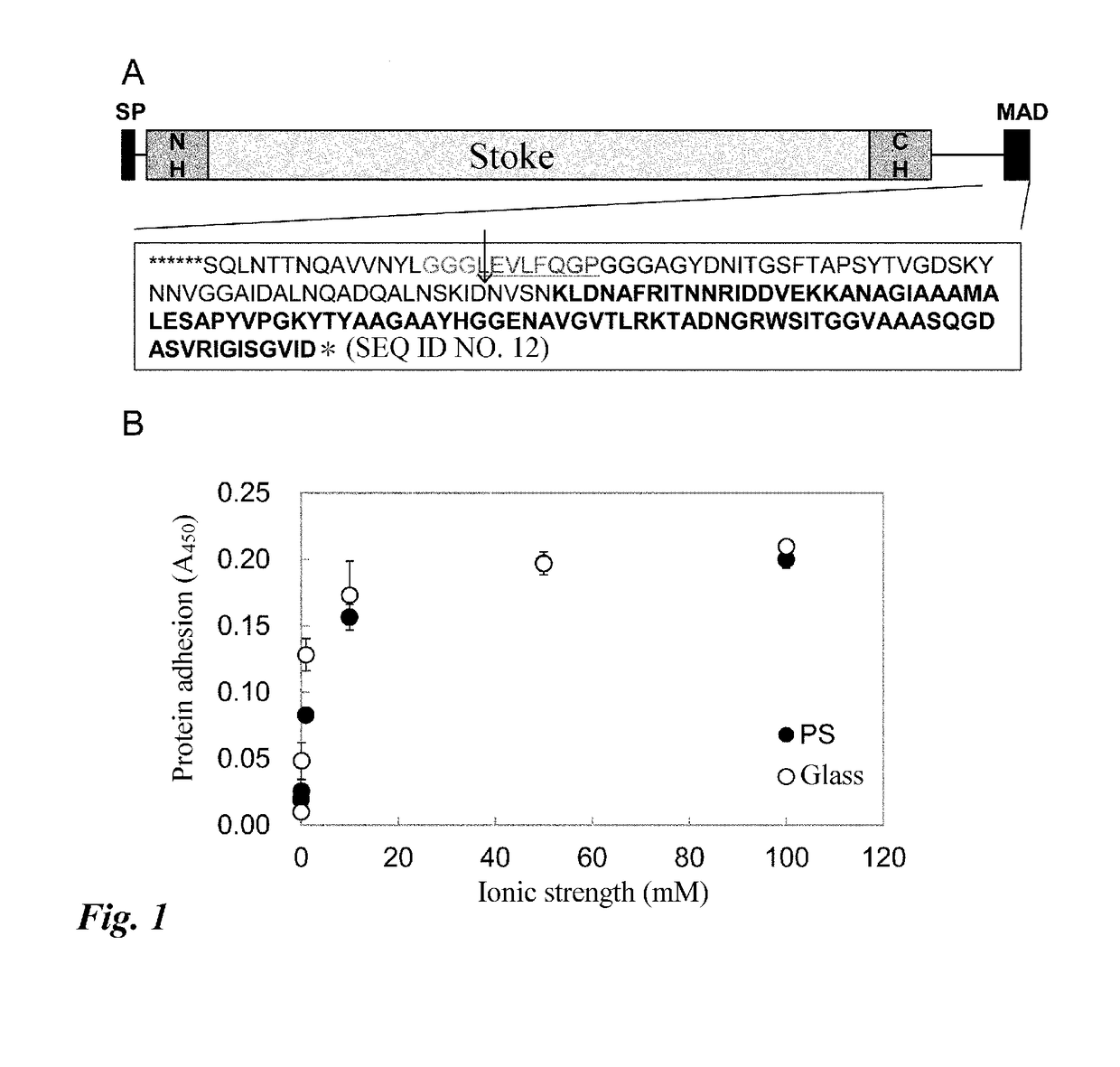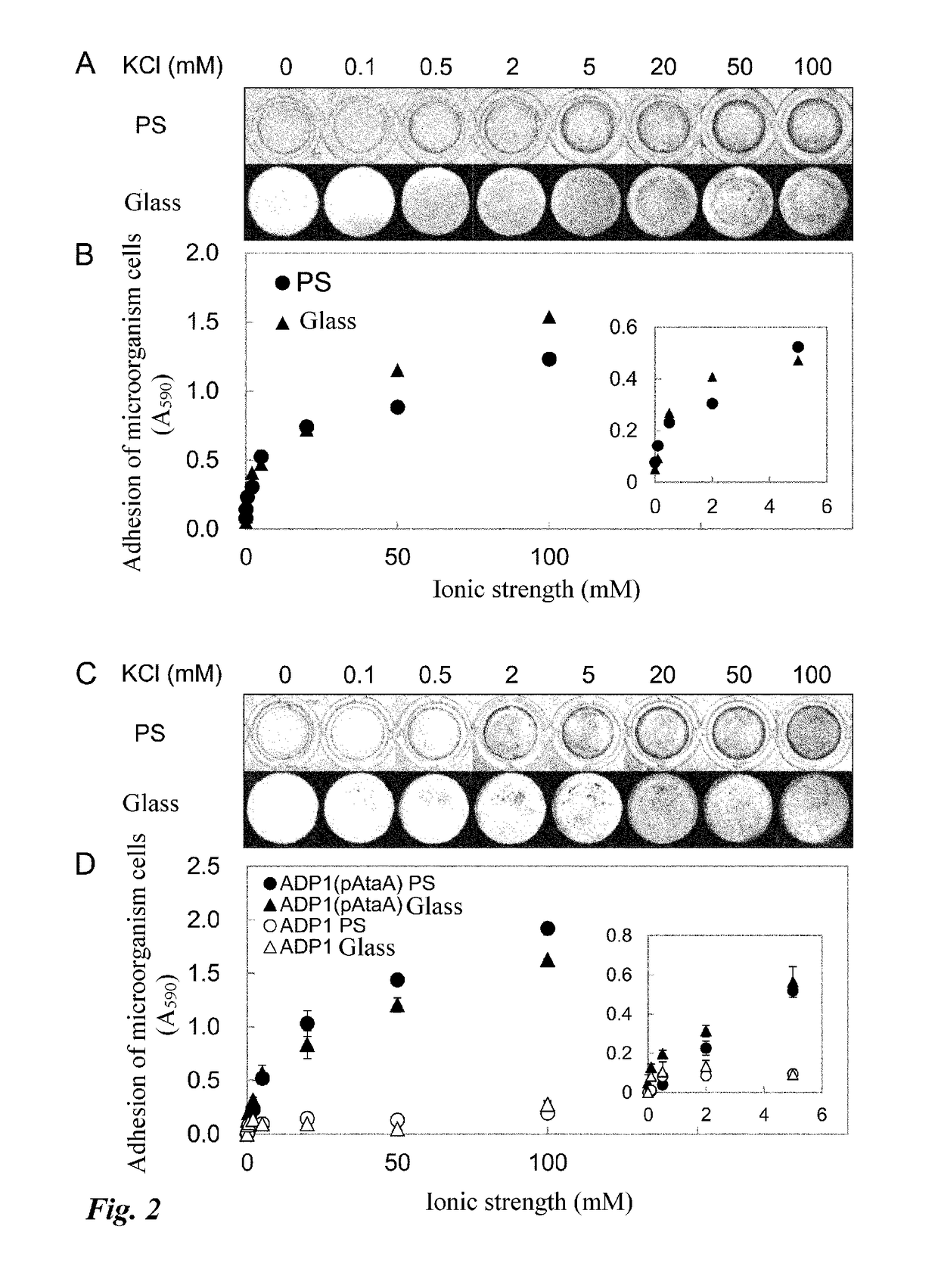Method for immobilizing and releasing microorganism
a microorganism and immobilizing technology, applied in the field of immobilizing microorganisms, can solve the problems of limiting the transportation speed of substances in gels, affecting the commercialization of biocatalysts, and high production costs of biocatalysts, and achieves high immobilizing power, simple structure, and unique adhesive properties.
- Summary
- Abstract
- Description
- Claims
- Application Information
AI Technical Summary
Benefits of technology
Problems solved by technology
Method used
Image
Examples
examples
A. Study of Adhesive Properties of AtaA
[0097]In order to advance the utilization and application of AtaA as the trimeric autotransporter adhesin (TAA) derived from Acinetobacter sp. Tol 5, the adhesive properties of AtaA were studied in detail.
[0098]1. Method and Material
[0099](1) Strain and Culture Conditions
[0100]The Tol 5 strain and its mutant were cultured at 28° C. in an inorganic salt medium or LB medium containing 0.05% toluene. The Acinetobacter sp. bacterium ADP1 strain and its mutant were cultured at 30° C. in an LB medium. The antibiotics were added as necessary at the following concentrations. Ampicillin: 500 μg / mL, gentamycin: 10 μg / mL for Tol 5-derived mutant. Ampicillin: 100 μg / mL, gentamycin 10 μg / mL for ADP1-derived mutant. For inducing the ataA gene, 0.5% arabinose was added.
[0101](2) Construction of p3CAtaA
[0102]Using overlap PCR, the whole length of the DNA sequence encoding the HRV3C protease recognition site was inserted into the ataA gene. The first PCR was ca...
PUM
| Property | Measurement | Unit |
|---|---|---|
| Fraction | aaaaa | aaaaa |
| Molar density | aaaaa | aaaaa |
| Molar density | aaaaa | aaaaa |
Abstract
Description
Claims
Application Information
 Login to View More
Login to View More - R&D
- Intellectual Property
- Life Sciences
- Materials
- Tech Scout
- Unparalleled Data Quality
- Higher Quality Content
- 60% Fewer Hallucinations
Browse by: Latest US Patents, China's latest patents, Technical Efficacy Thesaurus, Application Domain, Technology Topic, Popular Technical Reports.
© 2025 PatSnap. All rights reserved.Legal|Privacy policy|Modern Slavery Act Transparency Statement|Sitemap|About US| Contact US: help@patsnap.com



